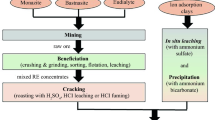Abstract
In the light of the remarkable strides in radioactivation analysis methods and techniques that haved been achieved progressively in the 34 years since Modem Trends conferences began, some speculations on the future directions that the field might take in the foresceable future seem appropriate at MTAA-9. Together with improvements that will likely occur in instrumentation, in prompt and ion-beam methods, there would seem to be yet a further potential for extending the range of information that radioanalytical techniques can provide by complementing RAA measurements on samples with an increased use of manipulative chemistry. Among complementary chemical methods are not only pre-activation chemistry for speciation studies and matrix removal but also, radiotracer/INAA combinations, isotopic exchange/INAA (as illustrated in this paper through recent studies on the behavior in the environment of solid waste residues), substoichiometric-RAA and classical radiochemical, post-activation separations for specific element(s). Results are presented on the toxic element content of solid waste ashes by INAA and on their uptake of65Zn and109Cd in which there is evidence of two interaction processes between waste particles and simulated groundwater: a rapid exchange (within a few minutes) and slow exchange extending over days. This tends to confirm results on leachability of toxic elements from solid wastes but serves to distinguish adsorption processes from isotopic exchange.
Similar content being viewed by others
References
H. A. Das, R. D. van der Weyden, J. Radioanal. Nucl. Chem., 191 (1995) 229.
S. S. Krishnan, R. E. Jervis, L. D. Vela, J. Biol. Trace Element Res., 43 (1994) 159.
R. E. Jervis, S. Krishnan, M. Ko, L. D. Vela, T. G. Pringle, A. C. Chan, Analyst, 120 (1995) 651.
L. D. Vela, S. S. Krishnan, R. E. Jervis, J. Radional. Nucl. Chem., 180 (1994) 40.
Environmental Protection Act; General Waste Management Regulation, Regulation 302/347 of revised regulations of Ontario, 1993.
D. R. Jackson, Environ. Sci. Technol., 18 (1984) 668.
J. D. Rodgers, R. E. Jervis, Use of Isotopic Exchange to Understand the Mechanisms of Leaching of Elements in Solid Wastes, Proc. Canadian Nuclear Society, 1995 Student Conference, March, 1995, p. 13.
D. J. Lisk, Science Total Environ., 4 (1986) 65.
A. Goldin, Chemosphere, 24 (1992) No. 3, 271.
Author information
Authors and Affiliations
Rights and permissions
About this article
Cite this article
Jervis, R.E., Rodgers, J.D. & Evans, G.J. The future of activation analysis: A case study of solid waste leachability. J Radioanal Nucl Chem 215, 15–21 (1997). https://doi.org/10.1007/BF02109872
Received:
Issue Date:
DOI: https://doi.org/10.1007/BF02109872




